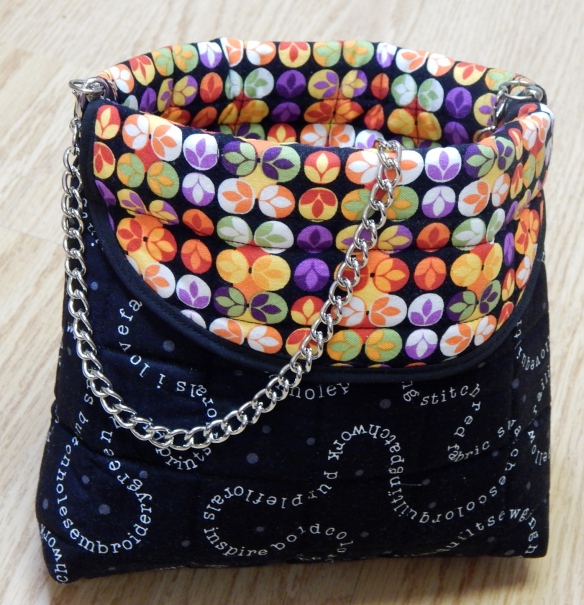I’m making a T shirt quilt for a friend, so she sent a large sack of T shirts to be used.
This friend and her future husband are both very athletic, so many of those T shirts are tech shirts–meaning they are 100% polyester knit!
I searched the internet for specific instructions for using polyester T shirts in a quilt and found NOTHING useful. So, here’s how I solved the problem, and I expect it will work for you, too.
The blocks for T shirt quilts are backed with fusible interfacing to stabilize the knit fabric. I buy lightweight interfacing so the quilt will drape well. A while back, I bought a bolt of Pellon 906F for that purpose. It is very lightweight and is intended to be used with semi-sheer fabrics, so it bonds at a relatively low temperature–very important for polyester T shirts! As you can see, the 906F is lightweight and thin. It fuses just fine at a temperature between the silk and wool settings on my iron. That setting requires only a few seconds to fuse, so there is no damage to the polyester shirts! Score!
As you can see, the 906F is lightweight and thin. It fuses just fine at a temperature between the silk and wool settings on my iron. That setting requires only a few seconds to fuse, so there is no damage to the polyester shirts! Score!
This interfacing is working fine with the 100% cotton shirts as well. All that’s needed is a backing that keeps the T shirt from stretching as it is sewn and quilted, and this does the job.
Here’s a look at some of the quilt blocks, waiting for final arrangement on the design wall. My husband came along and said, “How did you get T shirts so flat?” The answer, of course, is the backing 🙂
I’ll have a picture of the finished quilt as well as more information about it in a few weeks. Meanwhile, be warned: another friend who requested a T shirt quilt ended up making it herself (with my help)!












